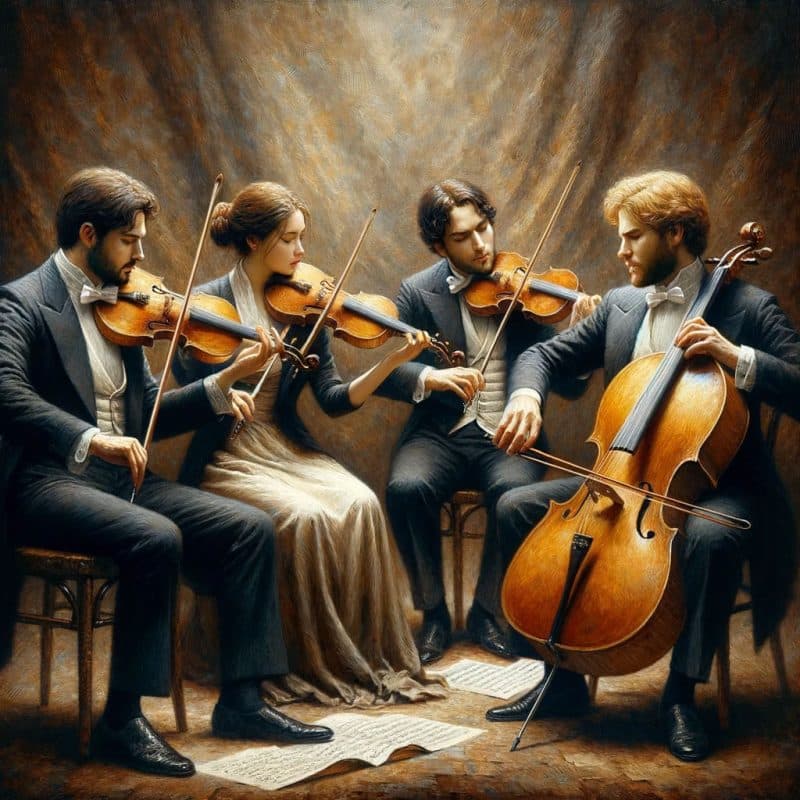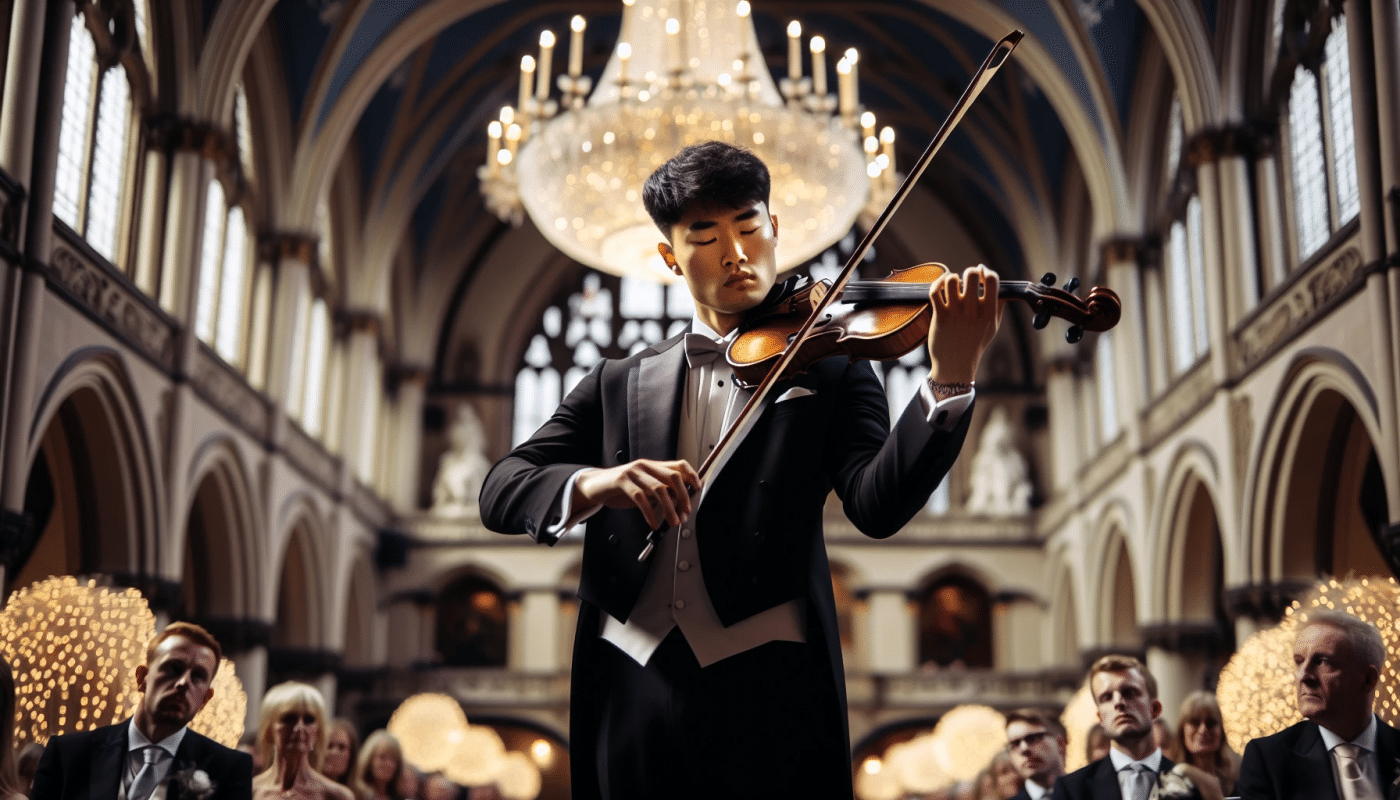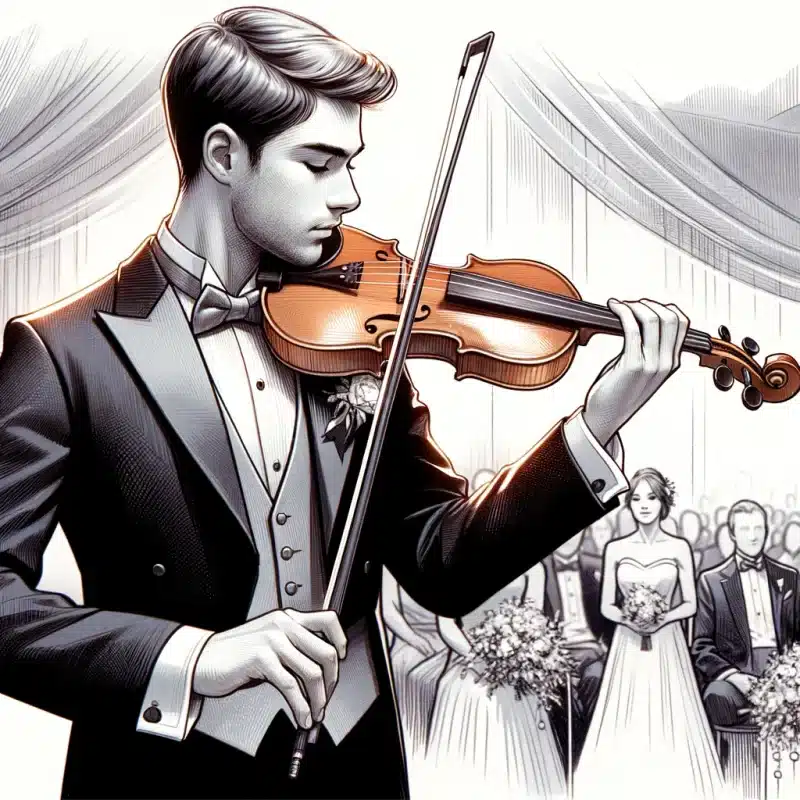Introduction
As a wedding violinist, your performance is not just about playing notes; it’s about creating an atmosphere that enhances the beauty and emotion of the occasion. One technique that can significantly elevate your playing is vibrato. Vibrato adds warmth, depth, and expressiveness to your sound, qualities that are essential for the romantic and heartfelt repertoire often chosen for weddings. If you’ve struggled with vibrato or wish to refine your technique, you’re in the right place.



Step 1: Developing Flexibility in Your Hands
Starting with the Basics
The foundation of effective vibrato begins with the flexibility in your hands, particularly your wrists. A stiff wrist limits the range and fluidity of your vibrato, so it’s crucial to start with exercises that promote looseness. Imagine the motion of bouncing a basketball with your hand; this movement encourages a relaxed wrist. Practising this motion as a warm-up before playing can significantly improve the flexibility needed for a smooth vibrato.
Moving to the Instrument
Once you’ve loosened your wrists, it’s time to transfer this flexibility to the violin. Without using the bow, place your hand on the fingerboard and mimic the bouncing ball motion, allowing your fingers to lightly tap the strings. This exercise helps translate the wrist’s flexibility to your playing technique, setting the stage for a more nuanced vibrato.
Step 2: Introducing the Instrument
The String Cleaning Method
This method involves using your instrument to further refine your vibrato technique. Initially, focus on the motion without the bow, practicing with the fingers on the strings in various positions. The goal here is to maintain the same loose wrist motion, but now with the added element of string contact. You can start with all four fingers and gradually move to using just one, emphasizing the importance of flexibility across different fingerings.
Step 3: Fine-Tuning Your Technique
Emphasizing Control and Precision
With the foundation set, the next step involves refining the control and precision of your vibrato. This includes practicing the gentle pinching of the strings and focusing on the back-and-forth motion that defines vibrato. It’s crucial to vary the speed and intensity to match the emotional tone of the music, especially in a wedding setting where expressiveness is key.
Practice Makes Perfect
Consistent practice is vital for mastering vibrato. Incorporating daily exercises focusing on wrist flexibility, string contact, and controlled motion can lead to significant improvements. Utilize tools like metronomes to develop a rhythmical vibrato, which can add a dynamic layer to your performance.
Additional Tips for Wedding Performances
Adapting Vibrato to the Wedding Repertoire
The beauty of vibrato lies in its ability to adapt to different musical contexts. For wedding violinists, it’s essential to tailor your vibrato to suit the mood of each piece. Whether it’s a soft, romantic ballad or a more upbeat number, adjusting the width and speed of your vibrato can help convey the right emotions.
Integrating Vibrato into Your Performance
Beyond the technical aspects, incorporating vibrato into your performances involves understanding its emotional impact. Pay attention to the moments within a piece where vibrato can enhance the expressiveness of a phrase. Practice transitioning smoothly between notes with and without vibrato to maintain a cohesive sound.
Continuous Learning and Improvement
The journey to mastering vibrato is ongoing. Seek feedback from peers, teachers, or through apps designed for musicians to connect and learn from each other. Engaging with a community can provide valuable insights and motivation to continue refining your technique.
Conclusion
Vibrato is a powerful tool in a wedding violinist’s repertoire, capable of transforming a performance from simply beautiful to truly unforgettable. By focusing on flexibility, control, and emotional expression, you can master this technique and bring a new depth to your wedding performances. Remember, the key to vibrato is not just in the mechanics but in its ability to convey emotion and connect with your audience on a deeper level.
Happy practising!

